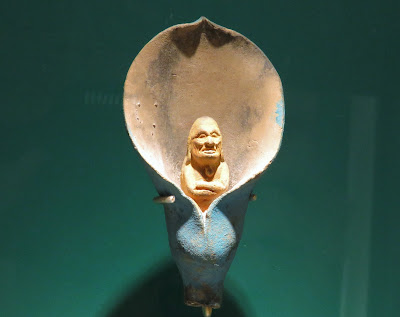The man in the arum, and other floral inventions in Mexican culture
The story of floral representation over at 2000 years is told through 365 pieces. At the opening in March, the Director of the Instituto Nacional de Antropología e Historia, Diego Prieto Hernández, explained that this exhibition demonstrated that our heritage can be appreciated through aesthetic, sensual and emotional responses as well as through academic research.
There are five themes, starting with the flower as a metaphor for things of value (from pre-Spanish times).
Then its the discovery of the new world, partly through its flora, including the 16th century herbal Códice de la Cruz-Badiano, often just called the Codex, as well as 36 spectacular (yes) herbarium specimens from the National Autonomous University of Mexico (UNAM).
The third theme is the flower as an allegory for the divine, including religiously inspired oil paintings by various renowned Spanish artists and a couple of sculptural pieces.
The flower as a symbol of beauty comes next, with strong associations in eroticism and the female form. Diego Rivera's work is included here. Finally, contemporary art such as the use of flowers in displays for the Day of the Dead and fashion.
Amid all this florifery I was struck at the very start of the exhibition by Flor de granada, an 18th century silver sculpture featuring a favourite symbol of mine, the pomegranate. In this case it is said to represent the immaculate conception of Jesus. Each to his own I guess.
As with any artwork, it's story continues. Six of its petals were stolen during the Mexican Revolution, leaving only two to enjoy today.
I'm afraid you'll have to rush to Mexico City if you want to see it. The exhibition closes on my birthday, 17 June.










Comments